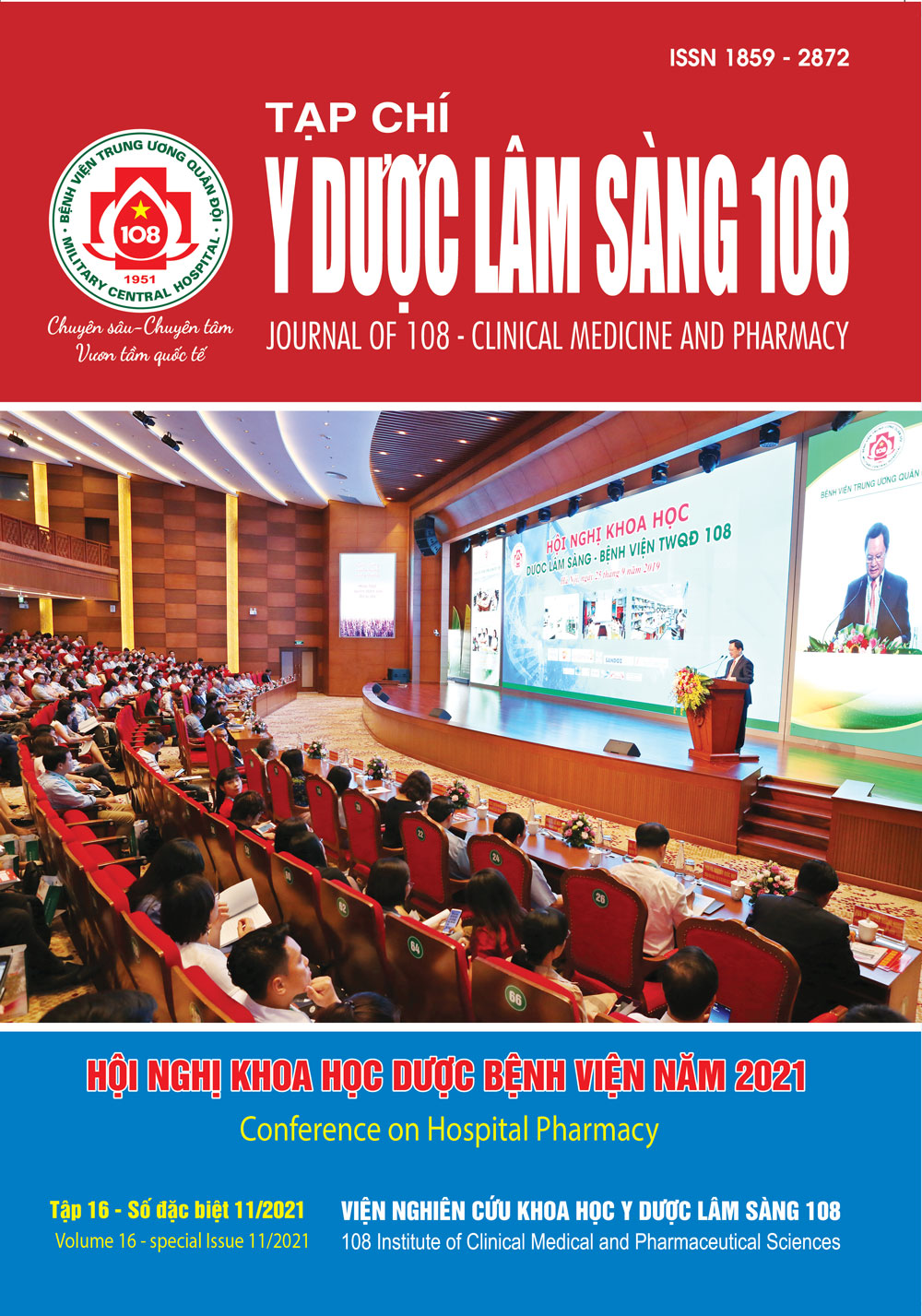Colistin resistance in multidrug and carbapenem resistant Klebsiella pneumoniae isolated in the 108 Military Central Hospital from 1/2020 to 9/2020
Main Article Content
Keywords
Abstract
Objective: To determine the prevalence of colistin resistance in multidrug and carbapenem resistant Klebsiella pneumoniae isolated at the 108 Military Central Hospital during the period from 01/2020 to 09/2020. Subject and method: A total of 86 K. pneumoniae strains were isolated from different clinical specimens. Bacteria were identified and antibiotic susceptibility testing was performed using Vitek-2 compact system. Multidrug/Carbapenems-resistant K. pneumoniae strains were subjected to colistin susceptibility testing using disc diffusion method on Muller-Hinton medium with colistin broth disk elution (CBDE) and the minimum inhibitory concentration (MIC) was determined accordingly. Result: Prevalence of multidrug/carbapenem-resistant K. pneumoniae (MD/CRKP) was 20.05% (86/429). The rate of MD/CRKP was the highest in Intensive Care Unit (35.0%, 30/86), followed by Infection Institute (17.0%, 15/86) and Department of Gastroenterology (8.0%, 7/86). MD/CRKP strains were mainly recovered from respiratory 55.81% (48/86) and 20.93% (18/86) blood specimens, 12.79% (11/86) urine speciment, 10.47% (9/86) fluit speciment. 45.0% (39/86) of MD/CRKP were resistant to colistin ((MIC ≥ 4mg/mL) and 15.0% (13/86) others displayed also MIC colistin increased (1mg/mL < MIC ≤ 2mg/mL). Conclusion: MD/CRKP resistant to colistin has emereged in the clinical setting, therefore, it is necessary to implement a practical guide for ensuring appropriate antimicrobial use in the hospital as well as to introduce diagnostic tools for rapid detection of colistin resistant strains.
Article Details
References
2. Nam N. S. and & Tám N. D (2018) Phân tích mức độ tiêu thụ kháng sinh carbapenem tại Bệnh viện Trung ương Quân đội 108 từ năm 2015 đến năm 2017. Tạp chí Y Dược lâm sàng 108, 13(8), tr. 78-84.
3. Ah YM, Kim AJ, and Lee JY (2014) Colistin resistance in Klebsiella pneumoniae. International journal of antimicrobial agents 44(1): 8-15.
4. Kadri SS et al (2014) Tracking colistin-treated patients to monitor the incidence and outcome of carbapenem-resistant gram-negative infections. Clinical Infectious Diseases 60(1): 79-87.
5. Le NK, Hf W, Vu, PD and Khu D et al (2016) High prevalence of hospital-acquired infections caused by gram-negative carbapenem resistant strains in Vietnamese pediatric ICUs: A multi-centre point prevalence survey. 95(27): 4099.
6. Poirel L, Jayol A, and Nordmann P (2017) Polymyxins: Antibacterial activity, susceptibility testing, and resistance mechanisms encoded by plasmids or chromosomes. Clinical microbiology reviews 30(2): 557-596.
7. Sader HS et al (2014) Antimicrobial activity of ceftolozane/tazobactam tested against Pseudomonas aeruginosa and Enterobacteriaceae with various resistance patterns isolated in European hospitals (2011-2012). Journal of Antimicrobial Chemotherapy 69(10): 2713-2722.
8. Xu L, X Sun and Ma X (2017) Systematic review and meta-analysis of mortality of patients infected with carbapenem-resistant Klebsiella pneumoniae. Annals of clinical microbiology and antimicrobials 16(1): 1-12.
 ISSN: 1859 - 2872
ISSN: 1859 - 2872
